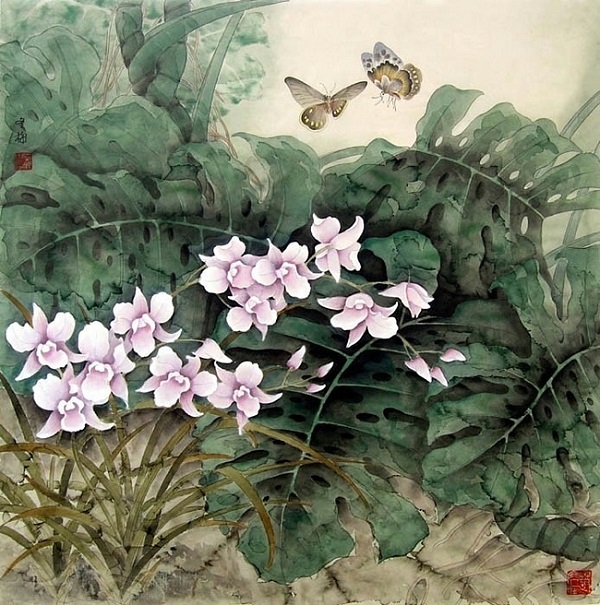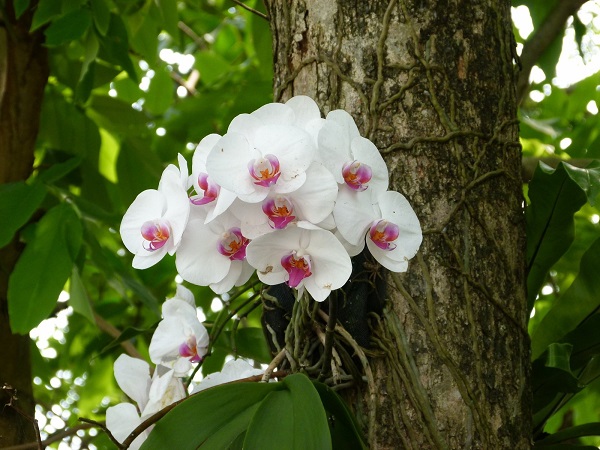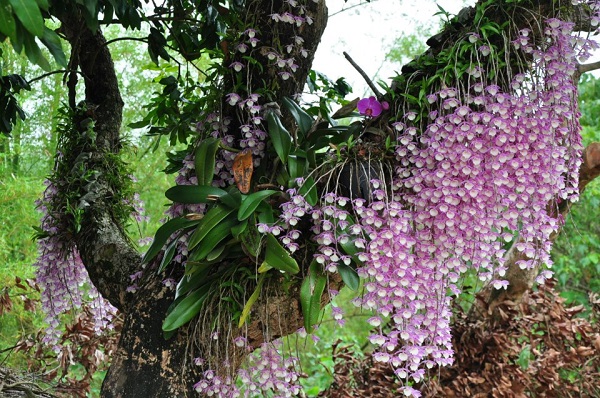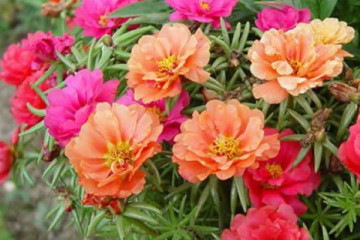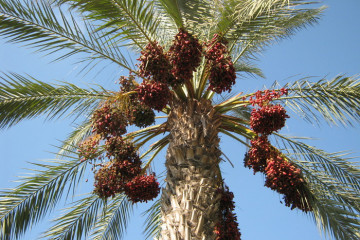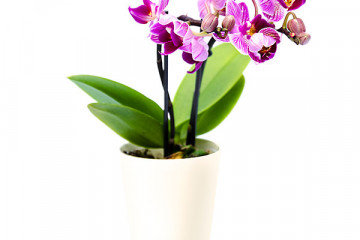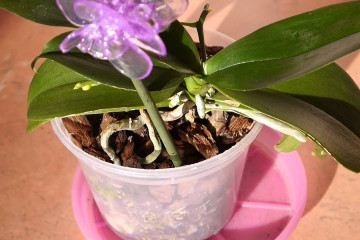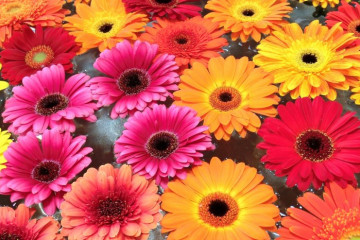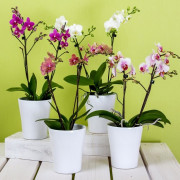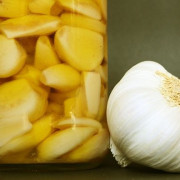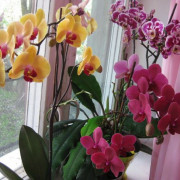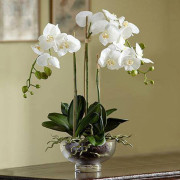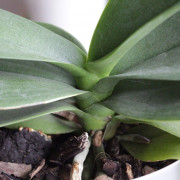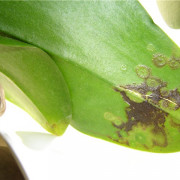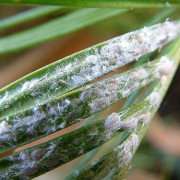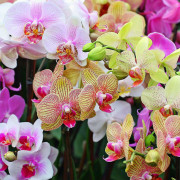Ohidea in nature in the natural environment: where and how they grow
Content:
Unusually beautiful and refined, graceful and even airy - all this is about orchids, which are very popular in home gardening. But not many people know how orchids grow in nature, when they appeared in Europe and how they got to Russia.
How does an orchid grow in nature
For residents of the metropolis, orchids are most often presented on store shelves, apartment windowsills, or at exhibitions. They seem exotic, native to the hot forests of the Amazon.
In fact, the orchid in the wild is a fairly common and hardy plant, easily adapting to any conditions. Plants are found almost all over the planet, in all climatic zones, with the exception of Antarctica. On the territory of the former USSR, there are about 49 species of these plants.
Undoubtedly, most of them are found in tropical forests, where nature has created the most favorable conditions: a high percentage of humidity, air circulation, protection from the scorching sun.
Where do orchids grow?
Conventionally, the territory of orchid growth is divided into four zones:
- the first group includes the United States, Central and South America, and other areas located near the equator. In this climatic zone, all conditions have been created for the growth of a flower, so all types of orchids can be found there;
- rocky areas of the Andes and Brazilian mountains, the territory of the whole of Southeast Asia. It is not so hot in this climatic zone, but the humidity level remains high, so all types of orchids are also found here. It is here that the most common phalaenopsis in the wild grows;
- the third natural zone of flower growth includes steppes and plateaus with a less favorable climate than in the tropics or at the equator. There are terrestrial species, minor species of epiphytic plants;
- in the fourth zone with a temperate climate, orchids are not as widespread as in all other zones. Only a few terrestrial species are found here, and then in a limited number.
First mentions
Today, an orchid can be grown in a house without difficulty, but where did it come from in megacities? The very country of origin of the flower is not known for certain, but the first mentions are found in the manuscripts of China, dated 500 BC. e. According to historical references, the famous philosopher Confucius wrote that the smell of a flower resembles the words of love of loving hearts.
Also in China, scientists found a manuscript dated 700 BC. BC, which describes in detail how the artist V. May cultivated a flower in a small pot. Since then, people all over the world have learned about this amazing flower, about its beauty, smell and medicinal properties.
But, probably, the most beautiful name for the flower was given by the ancient Greek Theophrastus, a philosopher and thinker, having found a plant with pseudobulbs, he named it "Orchis". Translated from the language of the ancient Greeks, this translates as "testicle". And all this happened in the 300th century. BC e.
Life cycle
Despite the fact that orchids vary in varieties and species, their life cycle is long - on average, from 60 to 80 years. But there are also long-livers in nature, whose age can exceed a hundred years, it is unlikely that it will be possible to grow such houses.
At the same time, the plants are unpretentious and quite livable. They are not afraid of temperature changes, and the lack of light, on the contrary, is perceived as good.
When and how the plant was first introduced to Europe
The orchid was brought to the territory of Europe in the 18th century, when seafarers discovered new islands and lands. It was from there that this exotic plant of the wealthy nobility was brought. There is even a legend that an English botanist received an almost dried orchid tuber as a gift. But attention and proper care led to the fact that she came to life and sprouted.
If we talk about where the flower was brought to Russia from, then it came from Europe at the beginning of the 19th century. And the famous Sandler firm did it. The flower was presented to the Russian Emperor himself and his family.
So, in 1804, a book was even published on the care and cultivation, reproduction of orchids. For example, the book described a flower that was named in honor of the wife of the leading Russian orchidophilus K. Engelgard.
The second wave of flower popularity in Russia is called the post-war period, when an exotic flower was brought from Germany, where it was specially grown in Goering's greenhouses. All plants were honorably transferred to the Moscow Botanical Garden.
Phalaenopsis orchid in natural environment on a tree
According to official documents, the Phalaenopsis orchid first came to Europe in the early 18th century. Phalaenopsis in nature made an indelible impression on the discoverers, after which he found himself in the homes of many admirers of unusual plants.
Its beauty amazes many, and growers make a lot of effort to grow in greenhouses, but they all failed and failed. But only after a century and a half, this type of orchid growing on a tree appeared on the windowsills of many lovers and admirers of this amazing flower.
In nature, no one was specially engaged in the reproduction of this species, they grow and reproduce by themselves. In the tropics, they can be found on almost every corner, they can hang from any surface in which you can simply fix the roots. In the very rosette of leaves, a peduncle must be knocked out, on which either flowers or seeds will be located.
The root system of epiphytes is powerful, it has some thickenings in which moisture and nutrient compounds accumulate. The tropics are considered the most favorable growing region, when natural conditions, temperature and humidity, abundance of light create real works of floral art, striking in colors and shapes.
In its natural environment, this type of orchid has adapted to live without soil, using trees and vines as a support, absorbing maximum moisture and nutritional components with their help. But such a tandem does not exclude the fact that phalaenopsis can grow on mountain slopes and in rocky terrain. The main thing is the abundance of moisture.
Comparison of wild and domestic plants
Domestic specimens can be not only those that grow in their natural environment, but hybrid varieties are also bred.They are often the result of long and painstaking work of breeders.
Plus, the conditions that exist for a flower cannot be recreated at home in apartments and houses. Previously, lovers of these flowers created conditions as close as possible to natural conditions for keeping and developing a flower, but this was too painstaking work. Therefore, gradually the breeders brought out new varieties that are less demanding on conditions, able to feel comfortable in an apartment.
Equally, domestic orchid species have a shorter life cycle. And if in nature the life of an orchid varies between 60-80 years, or even 100, then domestic hybrid varieties live about 8-10 years.
Another difference between indoor orchids and those that grow in their natural environment is a lush and abundant flowering. It is not uncommon for home flowers to knock out a peduncle throughout almost the entire year, when wild orchids bloom only in summer.
In the wild, natural growing conditions of this amazing flower, you can find a considerable number of orchids - original and unusual, while others may be similar to domesticated varieties. But, regardless of whether they are domestic orchids or wild specimens, they are all incredibly beautiful, and most of them exude a pleasant aroma. They are even used in medicine and cosmetology.
Thus, the orchid grows practically throughout the entire territory of the planet, where there are appropriate conditions for it. High humidity and temperature, plenty of light - and here is an amazing creation of nature and the hands of botanists in front of the florist.


